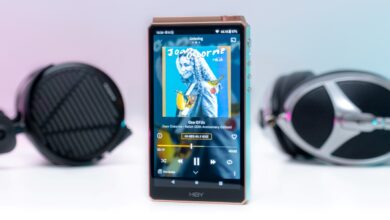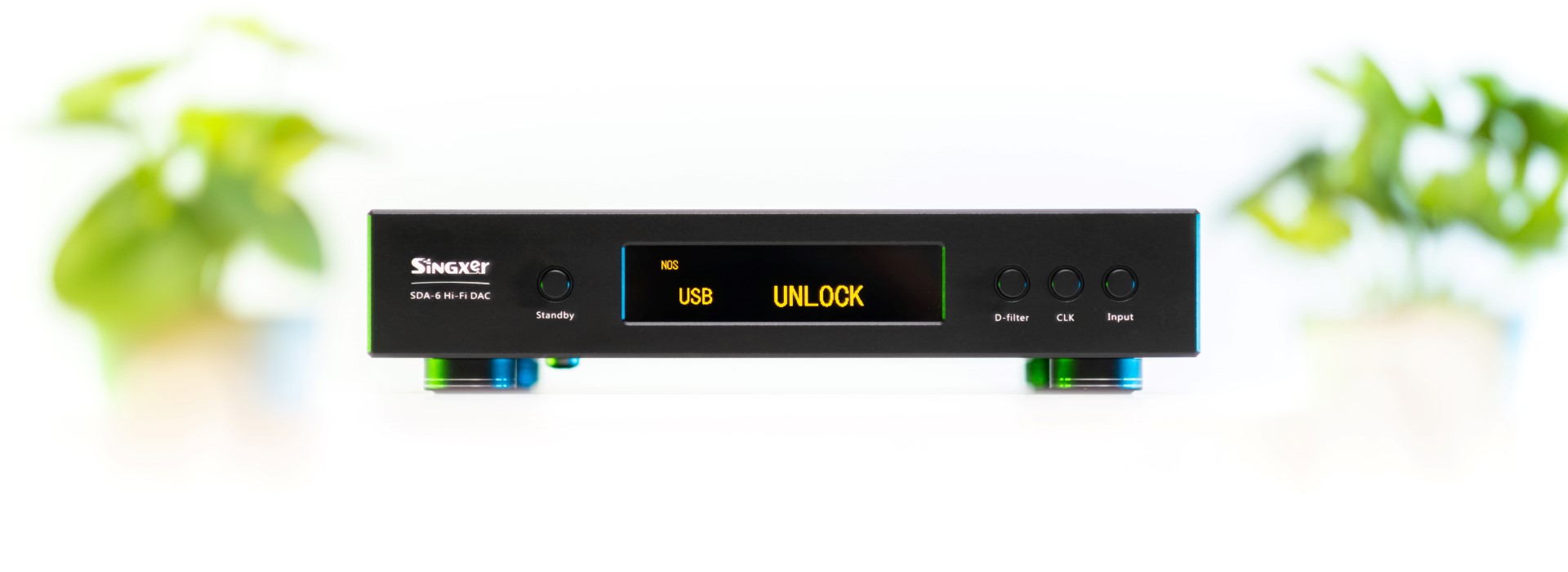
My Video Review:
Singxer Electronic Co Ltd. is a mysterious audio manufacturer to me. They’ve done ODM and OEM work for third party companies for more than a decade now. They started slow and small, but they learned fast, doing their homework so well, that in fact the second generation XMOS digital receivers were developed and optimized by the help of the Singxer team…how curious, I’m impressed already. Digital audio is clearly running deep through their veins, just look at their product portfolio. How many manufacturers do you know that have four digital interfaces under their belts (F-1, SU-1, SU-2 and the world renown SU-6), three digital receiver OEM boards that could be implemented in any commercial DAC (C-1, Q-1 and X-1) and three AKM-based digital to analog converters. It is a clear sign; they know their stuff very well.
I must confess that I didn’t focus my attention on this brand, but after reviewing their SA-1 fully discrete Class-A headphone amplifier and crowning it as the cleanest sounding all-discrete headphone amplifier that passed through my hands, they sent a clear message that both analog and digital domains were being polished for quite some time now. SA-1 impressed me at its respective price point, that immediately after dropping my review, I started hunting for their latest and greatest DAC that seemed familiar and yet so different to all other AKM4499-based converters.
While I didn’t stick my claws into their SDA-1 and SDA-2 units, their top-of-the-line SDA-6 PRO offered several innovations that I didn’t encounter before, at any price point. Its galvanically isolated USB board, oven-controlled clocking system based on top-flight Crystek 957 clocks, Hybrid PLL, custom FPGA solution and high-current Class-A output stage filtered by some of the best capacitors in existence (Mundorf MCap EVO) is something you won’t see even in ~$4000 DACs, let alone in a $1300 unit. I needed to hear it to believe it and I’m glad I did.
As usual, I will be conducting a comprehensive review in a headphone and speaker-based setup and I’ll compare it to its biggest competitor SMSL VMV D2 much later on. Before I move on to sound impressions, let’s unbox it and check what’s inside that box.
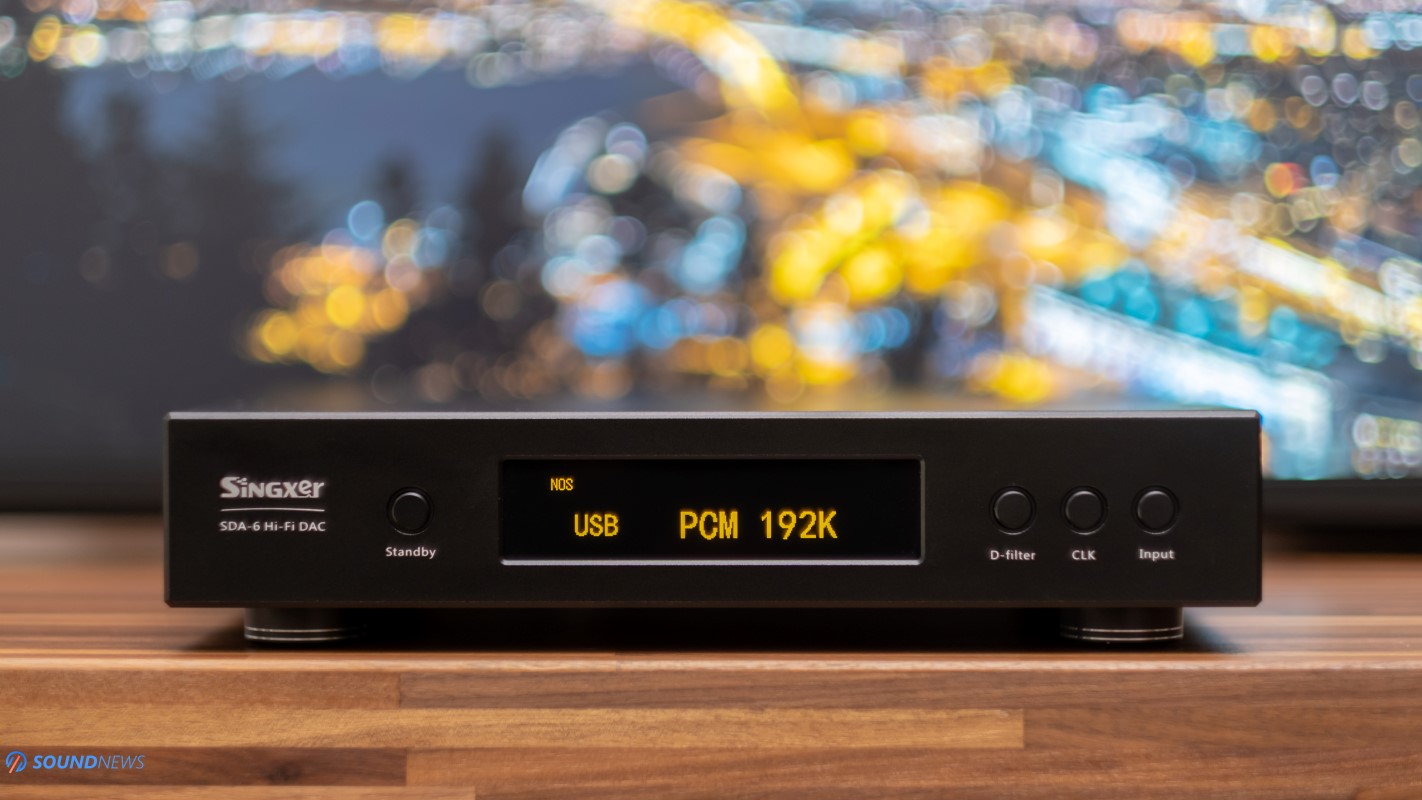
Unboxing Experience
I am greeted with the same good old packaging, double boxed is already a standard procedure to ensure a safe delivery to your door. The unit itself was cuddled with black foam on both sides with an accessory box near it. In that box a high-quality USB cable can be found wrapped in a nylon jacket, a power cable and a simple user manual will hint about the unit and all its features. I wish they mentioned all its specs as there is none of that, I am particularly interested in its power drain and voltage output on both XLR and RCA jacks. Since SDA-6 PRO is a pure DAC at heart, it doesn’t offer preamp functionalities, so you can forget about a remote control.
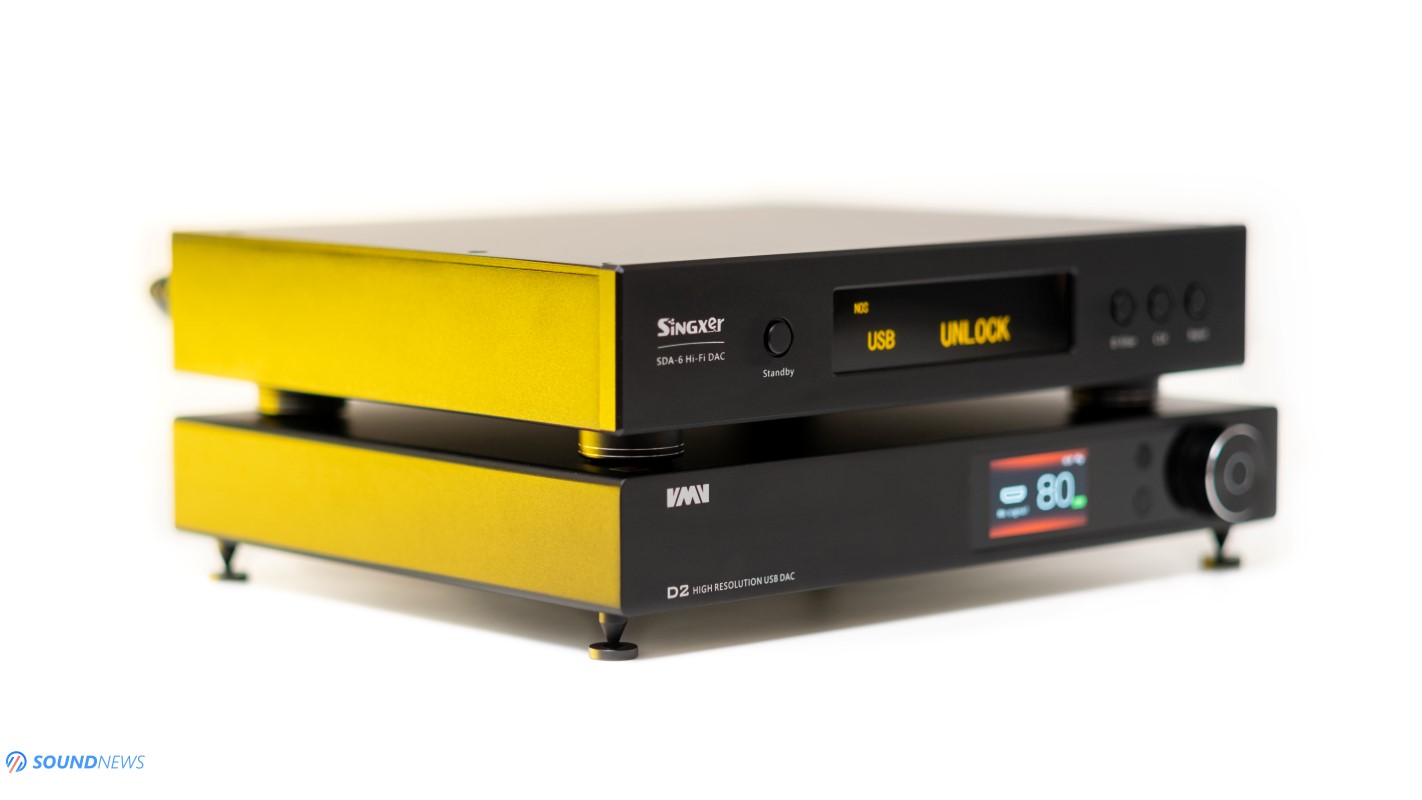
Design & Build Quality
While SDA-6 PRO isn’t a massive unit, I like almost everything about it, with the exception of 6 screws that were mounted on its top plate. Metal work seems flawless, we are getting a much thicker enclosure compared to any SMSL and Topping DAC, especially its front plate looks tank proof. There aren’t bells and whistles with this one, it looks like an old-school DAC with just a handful of buttons and with a monochrome LCD screen in the middle. Everything was beautifully arranged and its screen sits exactly in the middle. You won’t get complicated menus, hidden features or anything like that, as it will be showing you only the selected digital input, digital filter, sample rate and you can select an internal or external clock. All in all, it looks like an oversized metal brick that is painted in matte black, it doesn’t attract a lot of eyes and maybe that’s what I like the most about it.
Singxer went with a matte-black color scheme, discarding all other options. They powder coated it with a fine grain paint that should help it against scratches and accidental drops. Its LCD screen seems to be protected by a thin layer of plexiglass, it’s big, easy to read and the lettering seems big enough to be used in the living room.
Its LCD screen isn’t blinding in late night listening sessions, as you’ll get little to no light pollution in a dimmed room. It uses thick and oversized metal feet with rubberized O-rings that will absorb micro-vibrations. Since its output stage was biased into Class-A operation, it will dissipate more heat to a traditional DAC, luckily there are several holes under the unit, through which hot air would be moving outside its case for a longer service life. There are six screws sitting on its top plate that are hurting my eyes a little, but they didn’t bother me in a headphone setup, as a headphone amplifier was always sitting on top. At about 3.1 kilos (6.8 lbs), SDA-6 PRO it is on the heavier side, but considering its small footprint I’ve got a feeling that I’m dealing with a high-quality product. Size wise, it’s just a little bigger than VMV D2 and considerably bigger to any Topping, SMSL or Gustard DAC (with the exception of X26 PRO).
If you’re using it with an external DDC converter, then you can easily reconfigure its I2S input with the help of 8 switches that are either enabled or disabled. It works by default with all their DDC converters, I’m personally using it with a Singxer SU-6 interface which worked flawless without any intervention from my part, but if you own a different DDC converter, then please check its handbook that will help you reconfigure the unit.

Controls & I/O
It has a super simple front panel with just an On/Off button, a big LCD screen sits in the middle and on the right three buttons will let you choose a digital filter, internal or external clocks and the digital input.
On the back you can spot the widest variety of digital inputs as: USB, I2S (via HDMI), Coaxial (via BNC), Optical, AES and a huge surprise – a clock input, so you can use it with external clock generators. The usual RCA and XLR outputs are present and those will be providing you a fixed voltage output of 2.2V via RCA and 4.5V via XLR. It’s important to mention that you’re getting an either 115 or 230 V unit, leading to a less complicated power supply design.

Tech Inside SDA-6 PRO
Finally, I have arrived at the culmination of what makes this unit stand out from a sea of mediocre delta-sigma converters.
First and foremost, high-end audio starts with an outstanding power supply design, kill noise at the inception point, until it becomes a bigger burden down the road and that’s exactly what they’ve done with it. Singxer added an oversized O-core transformer that was completely isolated from the PCB board, from which DC power is being conditioned by a myriad of voltage regulators and filtering capacitors. That’s a 40-watt transformer that uses fours independent power supply windings and up to 20 groups of distributed voltage regulators. I see several audio-grade Nichicon FW and plenty of Panasonic electrolytic caps specially tailored to be used at DC filtering stages.
One of the most interesting aspects of SDA-6 PRO is its galvanically isolated USB board. In all seriousness, I’ve seen this practice only on $4000-5000 DACs and never on something as affordable. I see 6 isolators in total and if you’ll be using it via USB – this is literally the best USB implementation I’ve seen on any DAC, at any price. A small crystal oscillator and the XMOS receiver already sits on that tiny board and everything else was moved to its main board.
At the heart of its digital processing stays a flagship and out of print AK4499 DAC chip. This is their best and most premium converter. AKM Technology could resume the manufacturing of this silicon in a couple of years, but until that happens AK4499 is still a super-limited DAC chip, making Singxer SDA-6 PRO a limited-edition unit. Singxer has plenty of experience with this particular brand, as they used the velvety sounding chips in their first and second-generation DACs – SDA-1 and SDA-2.
Compared to AKM’s former flagship DAC chip (AK4497), the newest silicon doubled its pin numbers, die-size increased substantially and it’s their first silicon that outputs current instead of voltage. Since this is a quad-channel DAC, a single piece was enough to create a fully balanced signal, but a precise I/V (current to voltage) conversion stage needs to be built around it. For that SMSL used four OPA1612 op-amps that are known to be on the warmer and smoother side of neutral. Its analog output stage was built around another four OPA1612, together with a huge number of discrete components as diodes and transistors. Seeing two Mundorf MCap Evo capacitors at its output stage is also something new, I’ve never seen anything like this in any commercial DAC. It’s output stage seems much bigger; it was biased into Class-A operation and that’s the biggest reason why SDA-6 PRO gets warm after about an hour or so.
Singxer went one step further and developed their own adaptive clocking system, that was built around four independent and ultra-low jitter femto-second crystal oscillators. They went with some of the best current production clocks and my absolute favorite ones that I already have in several devices: the renown Crystek CCHD-957 that are oven-controlled (there’s a huge white metal box on top of them) that ensures heat stability and perfect clock synchronization. Besides using some of the best clocks, the same ones you’ll see in the Matrix Element X ($3400) and X-Sabre 3 ($3000), Singxer added a Xilinx Spartan-6 FPGA that will be doing clock synchronization recovery, greatly filtering the errors of the internal and external PLL, thus reducing remaining jitter as much as possible.
No Bluetooth chipset is on-board, no volume controls, no preamp stages, making its signal path as short as reasonably possible. Long story short, SDA-6 PRO’s PCB design is some of the best I’ve seen. The clocking system looks spectacular, power supply seems over-engineered, there’s the best AKM silicon on board and a high-current class-A output stage for an impeccable transient response. It was equipped with all the bells and whistles, skyrocketing my curiosity levels to the stratosphere.

Test Equipment
I tested it in a high-end loudspeaker and headphone setup. When using it in the living room, I’ve tried it as a DAC only unit, leaving preamp duties to a Benchmark HPA4. I’ve used two Benchmark AHB2 power amplifiers in bridged mode, that were driving a set of KEF Reference 3.
In a headphone setup it was mostly connected to a Ferrum OOR + Hypsos or to a Burson Soloist 3X GT, driving several high-end planar-magnetics and a bunch of dynamic headphones. Okay folks, enough with the talk, my ears are itching for some music, so let’s hit some ear-drums!

Sound Performance
I. Preliminary Sound Impressions
I must apologize to the Singxer team as I have it in my possession for more than two months, but since new units are never staying new around here, I’ve immediately plugged it in and used it the whole bloody time. It appeared in several reviews and video B-Rolls for the reason that I was using it daily, trying to get the hang of it. Two months later, sitting at the centerpiece of my headphone and speaker setups, burn-in was no longer a subject of discussion, so I calmed my spirits, I poured a glass of Macallan Double Cask and I sat down for a 4-hour listening marathon.
After switching from a SMSL VMV D2, the first thing that struck me was how transparent and crystal clear it sounded. Detail retrieval plunged higher and noise floor went lower and that shouldn’t surprise anyone, considering everything that surrounds that DAC chip.
I wasn’t getting a feeling that spotlights were moved to a particular frequency region, nor that I was getting a warmer or a fuller representation that AKM-based DACs are delivering so often. SDA-6 PRO appeared cleaner, tighter and faster sounding, as if somebody magically swapped that AK4499 with a ESS Sabre silicon. The second thought was how incredibly dark its background really was. The was a spooky silence in between the notes, the void spaces that connected musical notes were bigger, as even overly mastered files transformed into reference recordings. The noise floor was nowhere to be spotted, it wasn’t there with headphones and loudspeakers alike, even going much louder it remained dead-silent and it seems that SDA-6 already outperformed the revered Topping D90 MQA on most technicalities. Thirdly, there was a sense of calm and effortlessness, as if everything sounded just right from the first seconds, it was never too fast or slow, never too aggressive or mellow, never over-sharp or muddy sounding, it was just…right. I’ve got a similar feeling that I’m usually getting from the Rockna Wavelight R-2R DAC and all of the signs combined started to make sense to me. There wasn’t a longer ringing in the treble, nor a super-fast decay in the bass, suggesting that I’m dealing with a DAC that knows the meaning of pace, rhythm and timing and how crucial that is in a high-end setup. There was just a small droplet of warmth and liquidity that made me cruise through aggressive music as putting butter into a hot pan.
While it wasn’t fearless sounding as X26 PRO by Gustard appeared to me, SDA-6 PRO was still powerful enough and very clean sounding down low. Sub-bass notes immediately made their appearance felt, but those weren’t begging for my full attention. I felt a higher quality low-end, instead of a muscular and overly-dense bass performance. That wasn’t a problem at all, as Ferrum OOR, Burson Soloist GT and the Benchmark AHB2 immediately solved that issue in no time. While never sounding overly-creamy, there was still a trace of that velvety midrange that this silicon is known for, but instead of pushing this concept to extremes, Singxer tried squeezing the last drop of dynamic range, highlighting leading edges and contour of notes considerably more. If you’re hunting for a colored performance that would infuse a lot of soul, a higher substance, making your music butterfly smooth, then you should look elsewhere, as I’m describing a neutral sounding DAC with just a small hint of warmth and musicality.
When additional features as Bluetooth, MQA and a volume control (preamp functionality) were discarded on the SDA-6 PRO, that immediately ringed a bell, suggesting that it should sound clearer and more defined to the usual AKM flock and unsurprisingly, SDA-6 PRO performed exactly like that and a little bit more.
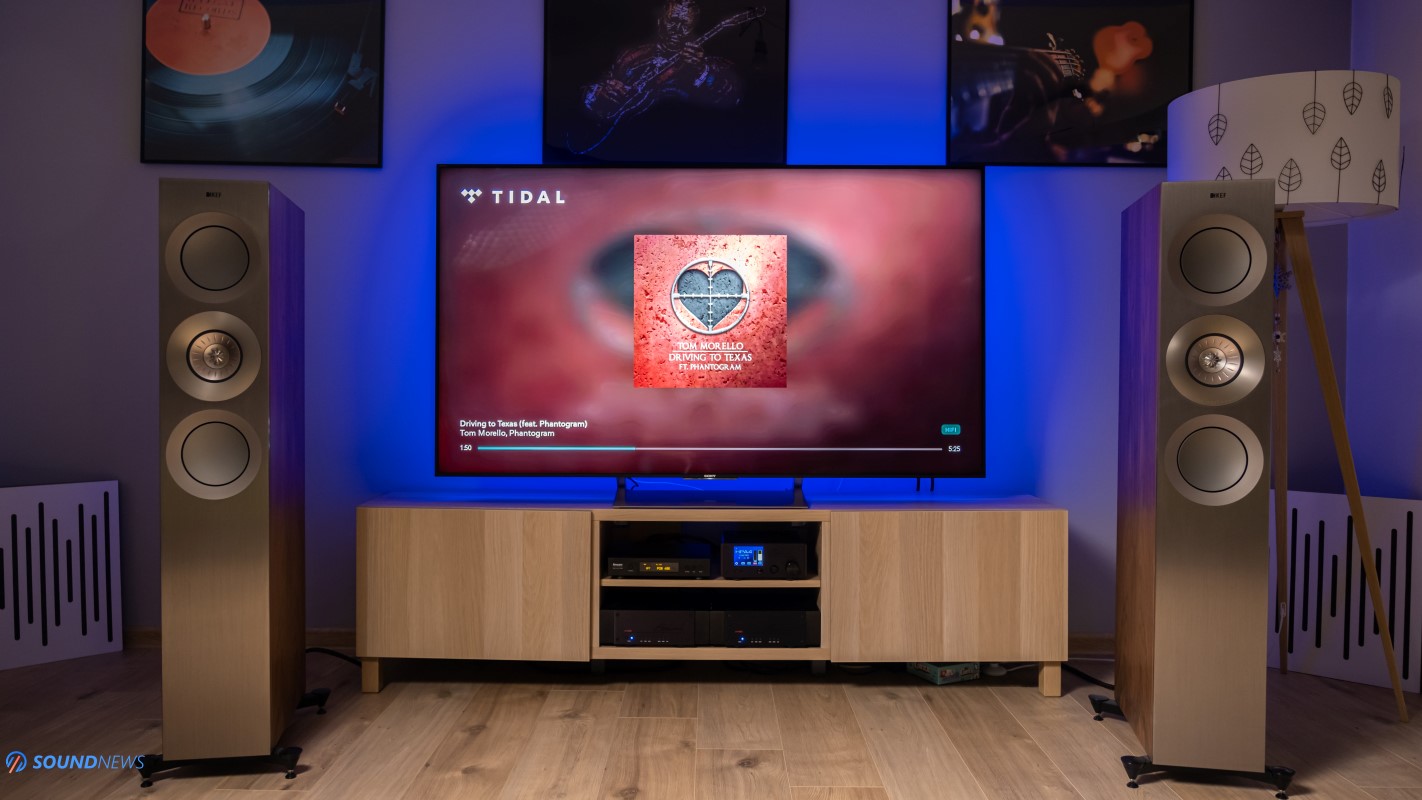
II. SDA-6 in a loudspeaker setup
You know, when I’m looking at an oversimplified analog stage consisting of 2 or 3 dual op-amps thrown in there somewhere – it doesn’t impress me a single bit. But when I’m seeing diodes, transistors and plenty of discrete components biased into class-A operation, I already know that speed and impact wouldn’t be an issue, the air travel wouldn’t be a problem and the amplifier that follows wouldn’t need to work as hard.
Case in point, Singxer lowered the output impedance of both its RCA (22 Ohm) and XLR (45) outputs and that was possible with the help of discrete components. A lower impedance equals to a stronger signal that wouldn’t harm the flow of the music. I’ve connected it to a Benchmark HPA4 preamp and then to a pair of AHB2 mono blocks of the same maker, I’ve leaned back and I pressed play.
I’ve went higher and even higher on the volume and still, there was a perfect channel balance and an absolute silence in between passages. Since an active preamplifier was added into the chain, that high quality bass that lacked a bit of oomph forever changed its thin hide with a much fluffier one. Bass felt more playful this time around, KEF’s Reference 3 were firing bass canon like notes when Infected Mushroom starting building up their mojo. I must say that a very good preamp improved its low-end delivery, as it was more powerful and tactile, delivering a higher impact into my chest. The usual bass notes that I’m getting from the Gold Note DS-10 Plus were going by a little faster, Singxer unit felt lighter on its feet and way nimbler sounding. With fast and impactful tunes, it wasn’t even a contest, as Singxer unit delivered everything I wanted from a lightning-fast track. Its slightly higher voltage output of 4.5V via XLR versus the industry standard 4V provided a small helping hand, as I didn’t need to raise my volume higher, thus keeping distortion at bay.
Overall, I can’t complain about a single thing, as it performed admirable in my loudspeaker setup. The only thing that you’ll need to purchase is a highly transparent preamplifier, otherwise you can seriously bottleneck its performance. In case of the SDA-6 PRO, I can certainly say that preamp quality was more important than power amplifier quality due to the GIGO effect (Garbage In > Garbage Out). On the cheap, I believe Topping’s PRE90 (review here) is your best bet, as it sounded so incredibly close to my own HPA4.
While Gold Note DS-10 Plus is a more expensive unit (more feature packed as well), Singxer’s masterpiece outperformed the Italian golden child when it comes to technicalities and I don’t mean a few ones, but all of them. With SDA-6 PRO in its place, there was more music in my room, there were countless of additional micro-details, the tempo went up a little, it was faster and more precise at the same time. Its effortless and calm attitude moved to my living room and while sub-bass was more playful and more present this time around, it was never over the top. Everything was still under a strict control, never trying to be more what it really was. I wasn’t feeling the sweetness and a higher midrange density that was coming from the Gold Note DS-10 Plus and SMSL VMV D2, but this time around, pace, rhythm and timing were the key words with the little Singxer. Once again, it reminded me that I’m dealing with one of the cleanest AKM-based DACs that passed through my hands.

III. Detail Retrieval & Transparency
The biggest highlight for me wasn’t how right, effortless or easy going it sounded, but how incredibly clean and detailed it was with all my setups. How the heck they could pull this off? SDA-6 PRO isn’t only one of the cleanest sounding AKM-based DACs out there, but it even challenged the best ESS-Sabre converters as Gustard X26 PRO and Matrix Element X. Those oven-controlled (temperature-controlled) Crystek clocks and custom FPGA solution greatly filtered the errors of said clocks, squeezing the last drop of performance from that particular silicon. I have no clue if anybody measured its performance, but this is a bloody clean and transparent sounding unit, even via USB, without a DDC converter attached to it.
One of the best current production Digital to Digital Converters (DDC) is made by Singxer, it’s their SU-6 that I’m using on a daily basis with all my DACs, so I could bypass the issues as signal integrity and noise that are coming from my PC. The interesting part is that SDA-6 PRO’s digital board was made so well, that with or without the SU-6, there isn’t that much of a difference. With the Rockna Wavelight and SMSL VMV D2, SU-6 elevated their performance to unrecognizable and yet on the SDA-6 PRO, I could barely detect a sizeable improvement. Yes, it was better via SU-6, but the added gain was so little, that SDA-6 was used mostly via its galvanically isolated USB input.
When reviewing audiophile gear, you must first understand the philosophy behind those products. If you like hearing new things in your tunes that you never knew were there, all the imperfections and all the beautiful intricacies and nuances, then SDA-6 PRO does that without flexing too much. This is a very detail-oriented DAC, without going into the clinical, analytical or dry sounding territory. It never highlighted the treble output more than what it should, it sat under a strict control, pushing detail retrieval up the ladder, while drowning brightness and treble glare. It indeed appeared more detailed in here compared to the VMV D2 and at first, I’ve got a feeling that there’s more energy in the treble, but after a few days of non-stop listening, I’m no longer getting that. There’s an outstanding extension up top, but I can’t call it bothering or plain sharp sounding. Even if detail retrieval sits on a pedestal as the number one ability that SDA-6 PRO skillfully mastered, this is still a very powerful music making machine.
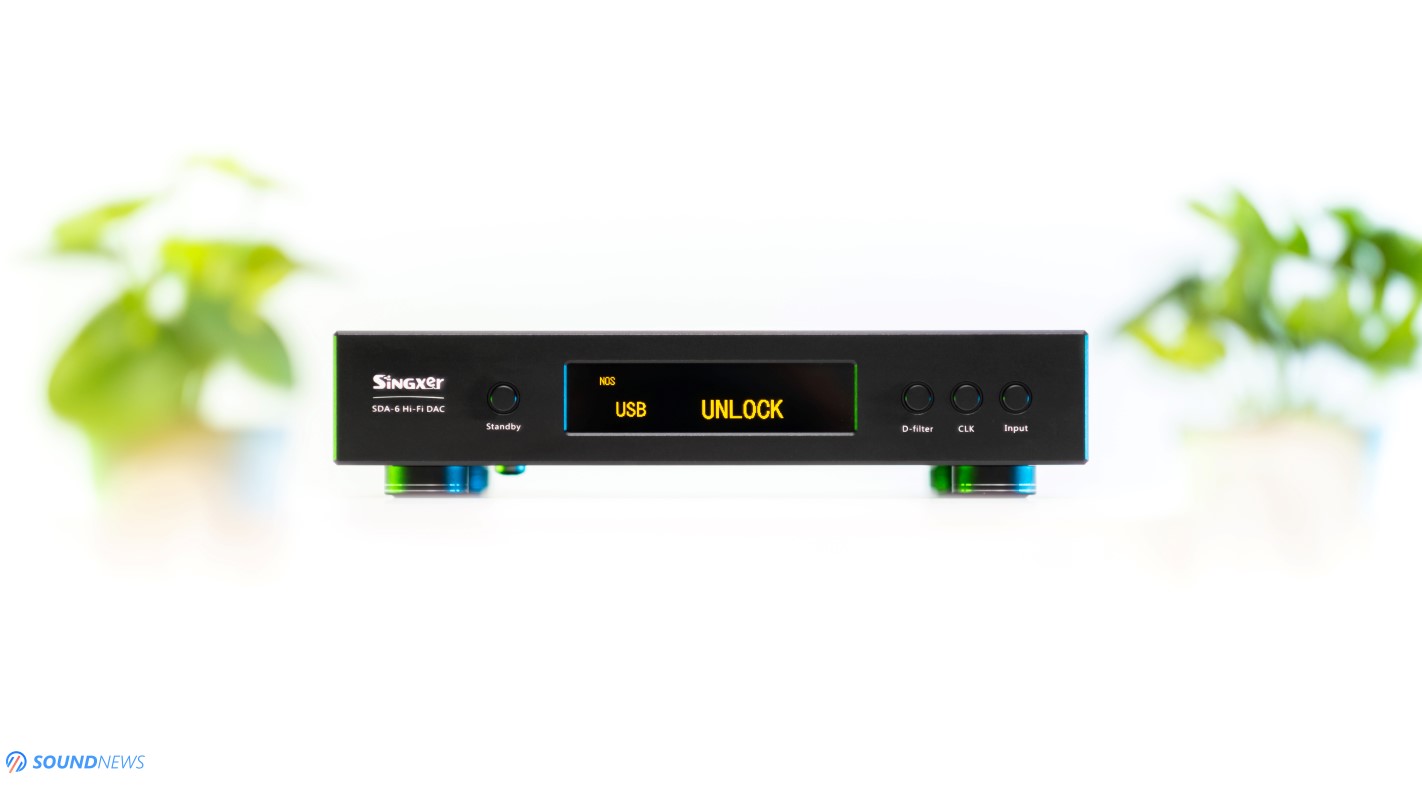
IV. Transient Response
Guitar plucks on The Hardest Cut by Spoon felt so real, so strong, defined and palpable that I could almost touch them, Infected Mushroom’s Spitfire still spits fire with deep reaching bass notes, Noisia’s Tentacles is still sending my feet into a toe-tap fiesta and Skrillex’s Supersonic still makes me feel like I’m living in the future, delivering earth shattering bass notes and powerful kicks into my chest. No matter what goes in and out of my playlist, SDA-6 kept on going and going, keeping its chin up, delivering an outstanding transient response. This chapter isn’t always rosy with AKM-based DACs, but Singxer’s excellent timing and fast pace cannot be denied. Topping D90 just found its arch nemesis, as everything I loved about that one, felt improved and elevated to a higher level with the Singxer. I’m not sure what makes it so highly energetic, but I can only presume that its Class-A output stage is pushing dynamics higher, delivering a more fun and lively presentation.
I believe its rock-bottom noise floor and sky-high detail retrieval also played a key role, as I am not getting a feeling that something stays in between me and my music collection.
If you’re into electronica and rock, then SDA-6 would be right up your alley, as it would be infusing a higher fun factor and it would never press the brakes. After volume matching it with the SMSL VMV D2, I felt that SDA-6 PRO carried less weight in the bass, but offered a higher quality type of bass, it was swifter and it decayed faster with electronica tunes.
When testing transients, my reference track is still Spitfire by Infected Mushroom (Qobuz / Tidal). I like everything about it, the cleanness, the tempo, the speed and fast decays, the left to right play and last but not least the presence of real instruments makes it an appealing tune. It’s a complex psytrance masterpiece, that puts a higher tension on short uplifting rhythms. Those unrelenting bass lines could tax a mediocre converter, amplifier of transducer, but in my case, it was a sweaty warehouse in terms of dynamics. You won’t find a moment of reflection up until the very end, as you’re constantly punched in the chest with a machine gun like speed and impact. After its completion, you’ll be catching your breath and look for some hydration helping you recover from the ecstatic moment that you just experienced. It’s a very addictive single, be careful as it might infect your brain, it got stuck in mine for almost a year now and I’m still listening to it. It was clear to me, that SDA-6 PRO wasn’t slowing this single down, I’ve got my dose of dopamine as it pounded hard and kept up with speedy dynamics.

V. Soundstage & Depth
If you look closer, some of these chapters are interconnected in one way or another. For example, soundstage and depth will always hang on transparency as without it, music couldn’t take off and fly away. This part is directly tied to how clean and powerful the output stage of a DAC really is. SDA-6 PRO employs plenty of discrete components and its analog buffer stage is biased into a high-current Class-A operation and as a direct result, it offers a vast and airy presentation that will impress live-music addicts. With it, music flies far and wide, nothing is stopping it from hitting some imaginary walls. Some of my live music sounded great on all axes, even crowded music felt decompressed to a certain degree. Note separation is the key word in there and it didn’t disappoint a single bit. You’ll find a moderate stage and depth with entry to mid-level converters, but not on Singer’s watch.
I didn’t even listen to my usual suspects, as when something is obvious at first, I didn’t need to double check what’s already clear from the start. In a headphone setup, Hifiman Susvara could get tiny and intimate sounding with the wrong setup, but after adding a Burson Soloist GT, my music started playing tricks on me, surrounding my head completely as if some notes were coming from behind my back. Even one century old recordings (Django Reinhardt) were untangled, so that I could focus on anything happening in there.
When I moved it to the living room in a fully balanced setup, it delivered the same airy presentation making my room sound bigger than its actual size. Thankfully, the iron grip of the SDA-6 PRO and of two AHB2 made Reference 3 sound controlled, punchy and really tight. Reference 3 can sound all over the place, slow and gentle, but not with this one. What more can I say…it delivered an open-wide soundstage and a deeper presentation, easily outperforming the likes of Topping D90, Gustard X18/X16 and Matrix Mini-I 3 Pro.
if you like picking music out of thin air, with sounds coming from different angles, then this is a mighty fine D/A converter.
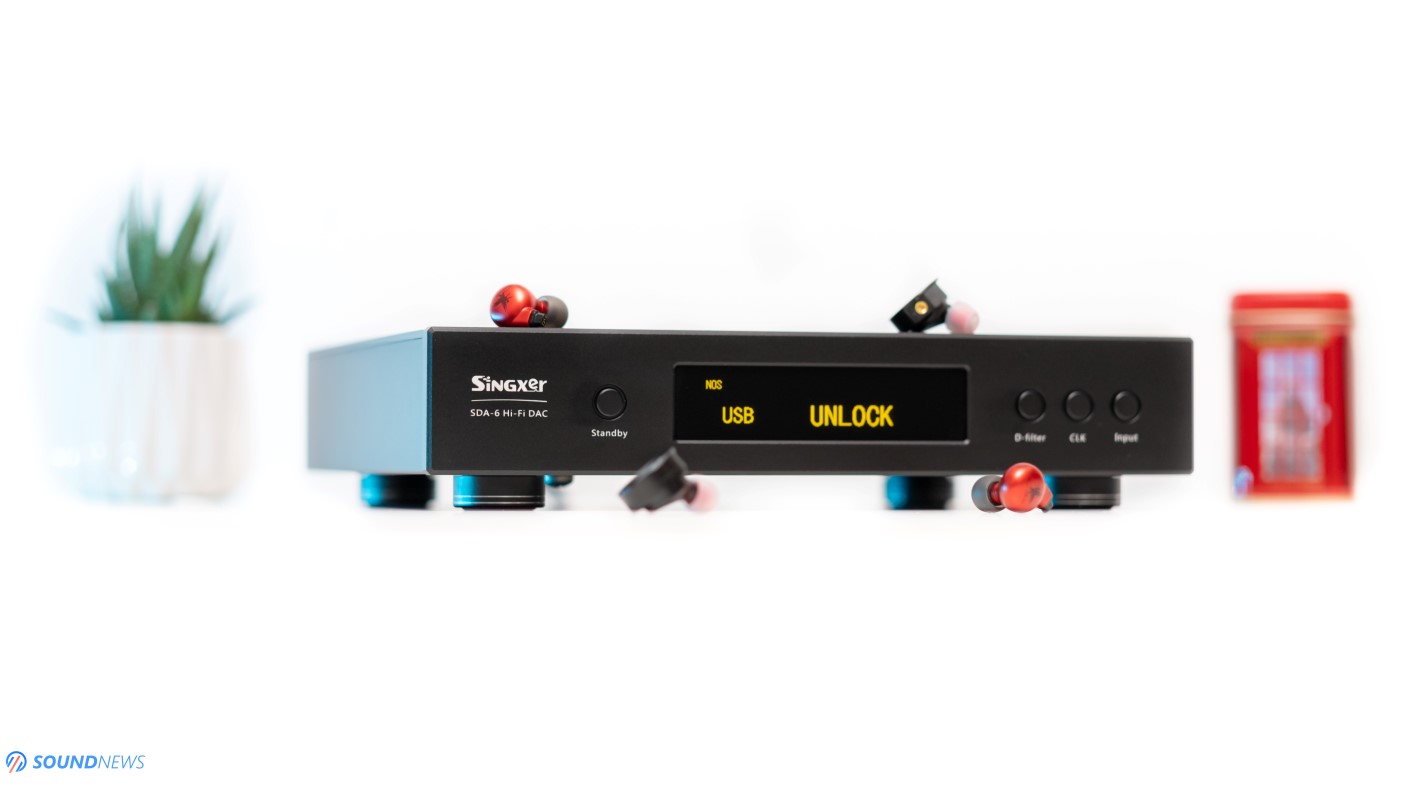
VI. Noise Floor
If you checked the latest developments, D/A converters aren’t increasing the noise floor anymore as it was the case a few years ago. Praise measurements and critical reviews, as current production DACs are no longer adding jitter or noise of their own. You’ll find inside 20 groups of voltage regulation stages, followed by several filtering stages that completely removed grain that could stain the background and as far as noise floor goes, it can’t be cleaner than that.
Putting it on top of a preamplifier, followed by two power amps and then by a pair of KEF Reference 3, I couldn’t spot a higher noise floor. I didn’t hear stutters, hissing or hums at any volume levels. KEF’s UNI-Q coaxial drivers are prone to noise from the downstream equipment and can pick-up residual noise with lower quality sources and amplifiers, but luckily that wasn’t the case with today’s unit.
Attaching a Benchmark HPA4 and driving several pairs of ultra-sensitive IEMs and low-impedance planar-magnetic headphones didn’t ruin my listening experience, as I couldn’t detect gremlins or background noises passing through. Everything was clear as the blue sky via headphones and loudspeakers alike. Going louder to my usual listening level didn’t add a layer of veil, as everything remained clean and defined, without losing inner detail or crispness. It seems that I’m dealing with an incredibly clean sounding DAC, so no complaints in here.
While Singxer isn’t providing exact numbers when it comes to noise rejection, I never found it noisy in any case and considering its impressive power supply design and filtering stages, I would be surprised hearing anything less than an immaculate performance.

VII. Frequency Response
A. Bass
We’re dealing here with an effortless and unrestrained bass performance. The bass quality is through the roof with this one, as its both speedy and impactful sounding. It’s not exactly hard pounding as it was the case with Gustard’s X26 PRO and Rockna Wavelight, but it’s more or less on the same level with the SMSL VMV D2. I’m perceiving multiple layers of bass coming towards me, sub-bass region felt defined and clean sounding, but it never tried to steal my attention. Since we’re talking about one of the finest AKM-based converters, bass notes were appearing out of a black void, showcasing their beautiful flow and natural decay. It was hefty and muscular in my stereo setup, but I could replicate the same feeling via headphones if Ferrum OOR or Burson Soloist GT would hop on my table. It will reach the lowest octaves without too much trouble, decaying its energy depending on the music that is being played. While there was plenty of bass definition, I didn’t feel it aggressive or all over the place, it was tightly controlled and it came in right doses. Luckily, we aren’t getting traces of distortion even at much higher volumes, strengthening my claims that we’re dealing with a high-quality bass. Mid-bass didn’t feel elevated as it might happen on VMV D2 and it wasn’t drawing attention to it, but it was still playful sounding to me.
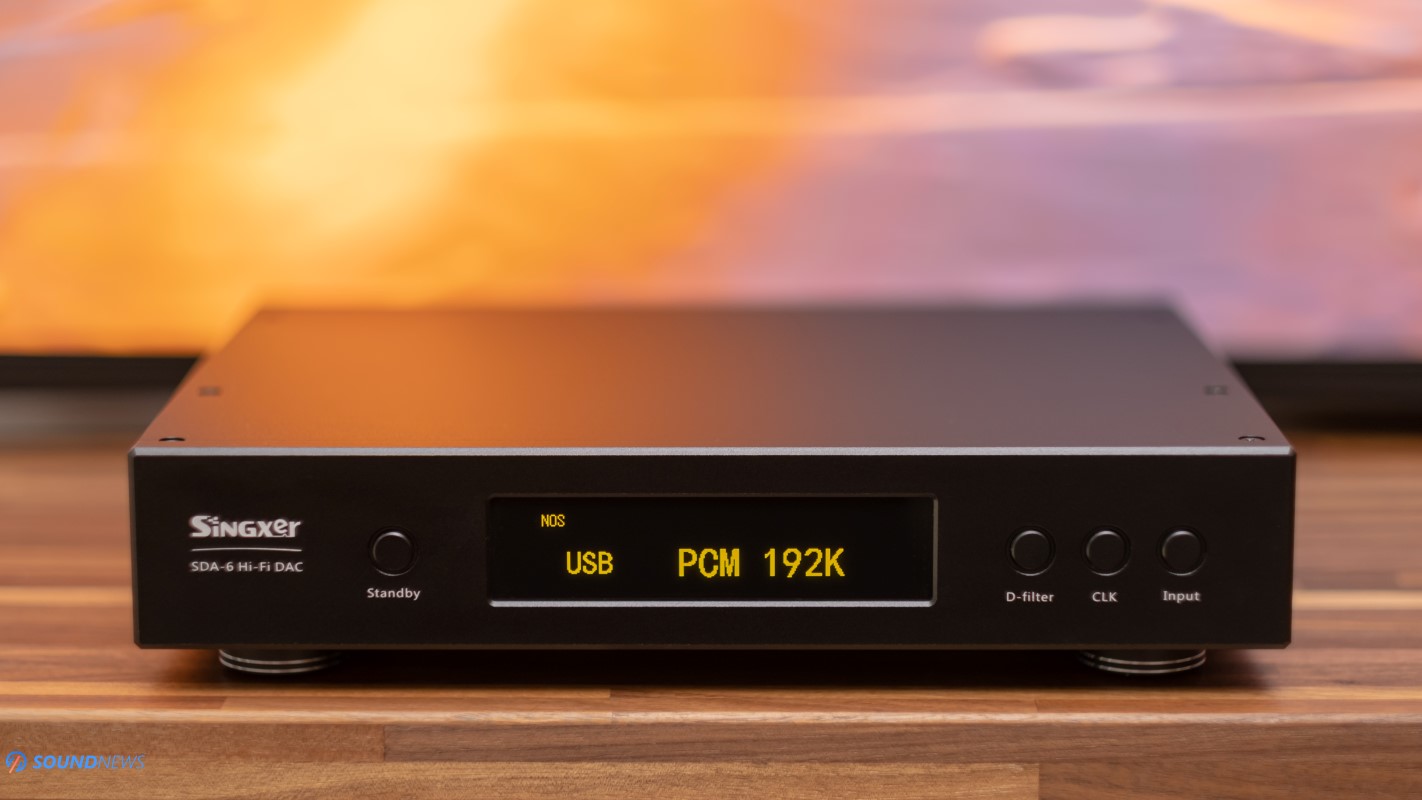
B. Midrange
Midrange region felt natural and a little denser sounding compared to my former ESS-Sabre converters and while walking around the listening room I could feel a heavier air around me. I particularly enjoyed instrumental music with this one, it’s difficult explaining with words the exact feelings that I had, but I will just say that I was carried away by music. Instead of a dead-neutral / linear midrange, it goes just one step further into the light, revealing its inner beauty. It was by a hair warmer sounding to my linearity curve, vocals felt sweeter and smoother to me. Even aggressive music wasn’t so difficult to swallow, as Velvet Sound technology was smoothing out the grain and the raw edges, in exchange for a pleasing tonality. Instead of just being there in the living room, it carried more emotions, calling to be embraced and hailed as the best part of this converter. After passing through several jazz, blues and rock albums, guitars and violins started speaking to me, I couldn’t get enough of that juicy and warm-ish sounding midrange. Its only by a hair elevated to the rest of the FR, but I actually enjoyed that effect that planted more life in my headphones and loudspeakers. Its higher engagement factor isn’t coming from the bass section as it happens with X26 PRO, this time around the midrange section played some tricks on me. There is definitely more texture in here compared to Topping’s D90SE, SMSL VMV D1SE, Gustard X26 PRO & X18, even Matrix Audio creations didn’t sound so alive and emotional.

C. Treble
I was preparing myself for a gentle roll-off in this region, as most AKM-based DACs are doing to a certain degree. There is a mild roll-off with the Gold Note DS-10 Plus and a much smaller one on the Topping D90 and SMSL VMV D2…but SDA-6 PRO refused following the same path, screaming from a mile away: Non Serviam! It doesn’t abide by the rules and tries to be different, clearly, I’m dealing with an extended sounding AKM based DAC. This fellow will be delivering the full force of the treble, as drums felt quite powerful and oh, so defined! There was a small accent on its treble delivery in the first days, but it’s no longer the case two months later. Brightness went out of the window and everything that remained was a clean, transparent and a defined treble performance. I wasn’t surprised hearing crystal clear double-drum solos and feeling the full force of snare drums hits. If you’re into treble intensive music and you love your drums powerful, yet clean and brightness free, then SDA-6 PRO will be delivering you exactly that. There is texture, there is detail, there is transparency, but there’s no sharpness and that is another trait I find interesting on it. You know, I’m very much into all kinds of musical genres, including treble-intensive and with some particular setups, I just refuse listening to such genres, as I wouldn’t enjoy my time as I might with an R-2R, FPGA or AKM-based converter. With SDA-6 PRO, I could listen to prog rock and folk metal all day long, hearing and feeling outlined metallic textures, sans the issues associated with less than perfect digital sources.
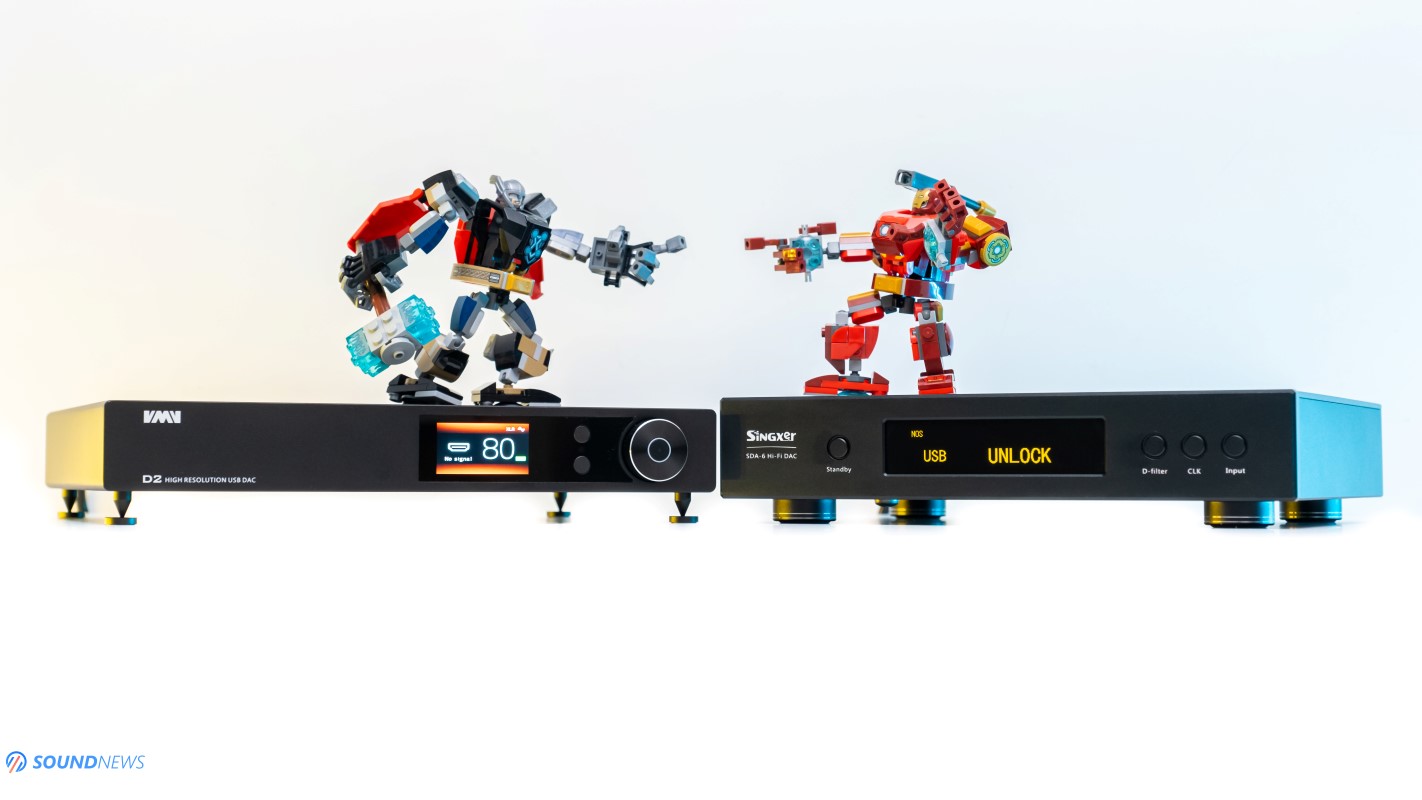
VIII. An Important Comparison
Singxer SDA-6 PRO ($1300) VS SMSL VMV D2 ($1700)
Build quality wise, both are carved on CNC machines with high tolerance numbers, they look premium and expensive to me. Although, I’ll give an edge to the VMV D2 which looks nicer, as it was carved from a single block of aluminum and it still carries a more futuristic and elegant shape. SDA-6 PRO has a few rough edges, it uses four metal plates that are being attached to its sides, plus there are 6 screws on top of its case, losing some coolness factor in the process. VMV D2 screams higher quality craftsmanship from a mile away, it feels nicer to anything they done before, metal work seems outstanding, the only thing that isn’t looking good to me is its misaligned LCD screen that doesn’t sit exactly in the middle of the case.
In terms of features, SMSL put way more stuff inside, hence having a higher price point. Besides working as a pure DAC, D2 can also work as a preamp thanks to its volume control, there’s an outstanding Bluetooth receiver on board that supports the latest Bluetooth codecs and lastly, SMSL blessed it with a highly polished user interface. Its graphical interface and feature set is really up there with some of the best I’ve seen, as you can enable or disable analog inputs and outputs, you can select multiple digital filters, dim its display, change DSD roll-off, change pin configuration of the I2S input, select the clock frequency of the external clock and many other things. On the other hand, SDA-6 PRO offers an oversimplified UI, where you can select your desired digital input, digital filter and its internal or an external clocking system.
When it comes to component selection, SMSL stands out with a better power supply implementation as besides an IEC filter, there are two O-core Noratel transformers that will be conditioning the power. SDA-6 PRO isn’t as impressive in here, but it still offers a great power supply implementation. When it comes to digital and analog sections, this is where SDA-6 PRO takes a serious leap forward. Even if both units are using the same AKM silicon and I/V conversion stage (4x OPA1612), the LPF (output) stage is considerably more advanced on the SDA-6 PRO. There are several discrete components in there, including diodes and transistors and on top of that, the whole circuit is biased into Class-A operation. The digital section of the SDA-6 PRO is also on a higher level due to an oven-controlled clocking system, to higher precision crystal clocks (Crystek CCHD-957) and to a better error correction by the help of a custom FPGA solution (Xilinx Spartan 6). Last but not least, if you’ll be using them with computers of all sorts via the USB input, then SDA-6 PRO offers you a full galvanic isolation, meaning that all incoming USB noise will be filtered and discarded, while with D2 – USB noise will be passing through.
Before doing extensive listening testes, I needed to volume match them, since VMV D2 is outputting 5.2V via XLR and SDA-6 PRO a weaker signal of 4.5V. For that I used a calibrated MiniDSP EARS system and a 300 Hz sine wave. EARS detected a difference of exactly 1.5 dB at the listening level of 90 dB with the Hifiman Susvara. Before listening, I volume matched them, I’ve used the same power cables (2x iFi Audio SupaNova), the same interconnect cables (2x Topping TCX1), USB cables (Chord Performance) and HDMI cables (Supra HDMI 2.1) and I commenced a longer listening session. All my tests were done blindly with the help of my beloved that was switching the inputs on the Burson Soloist GT.
Before going deep into this comparison, it needs to be said that both converters are the very best AKM-based D/A converters that I’ve tried at my place. Both units outperformed the Gustard A22, Topping D90MQA and D70, even Gold Note’s DS-10 Plus didn’t feel as technical and clean sounding to me.
The most striking thing to know is that both units are sounding almost indistinguishable. Both are offering an extended FR at both ends, I find them exceptionally open sounding, they carry a natural tonality and lightning-fast decays when asked for. They sound very alike, but still…there was a difference.
SMSL unit was putting a higher accent on the mid-bass and midrange delivery, while hiding textures from the upper treble, while Singxer’s DAC was putting a higher accent of the treble cleanness and then on the midrange delivery. In simple words, VMV D2 was a more forgiving sounding DAC, slashing a big portion off the treble glare, while infusing more life in the mid-bass and midrange sections. It’s a lightly colored sounding unit that walks the same path of well-made R-2R ladder DACs. D2 was slightly more natural and easier going, where SDA-6 PRO felt more linear and more honest sounding to me.
While both are technical sounding, SDA-6 PRO took the lead, revealing its clean and transparent nature, as more nuances were hiding in the background. With clean sounding amplifiers and transducers, SDA-6 PRO could pull more information from my tunes, putting a higher accent on their contours, everything felt more defined and cleaner sounding with it. Via USB input, VMV D2 appeared muddier and less tight, while SDA-6 PRO never felt that way. While Singxer’s unit isn’t that musical and organic sounding in the long run, it felt more technical and honest sounding to me, never trying to mess with the frequency response.
On bass intensive music, VMV D2 felt more playful and alive, it was weightier and punchier sounding, whereas SDA-6 PRO delivered a cleaner and more layered/breathable bass performance. Singxer is putting a higher accent on the bass quality, where SMSL is putting a bigger accent on its quantity. You can improve SMSL’s bass performance by adding a Singxer SU-6 DDC and you can improve bass definition of SDA-6 PRO by using a more potent amplifier, but in both cases, you’ll be adding to the cost.
In terms of soundstage and depth, it was a hit or miss, sometimes D2 felt like bigger sounding, sometimes I had a better pin point location of all the notes with the SDA-6 PRO and other times I couldn’t spot a difference at all. However, SDA-6 had a blacker background and on very rare occasions, it felt bigger sounding, enveloping my entire body with sounds as more air was traveling around, which was happening on a lesser scale with the D2.
Moving on my loudspeaker setup, their tonalities carried over, but SDA-6 PRO felt tighter sounding, cleaner, more focused and controlled sounding, like I magically treated my room with invisible absorbers and diffusers. VDV D2 didn’t offer the same iron grip over KEF’s drivers, as it added longer decays and a thin layer of veil all over my music. I should remind you that both units sound more alike than different, I found minor differences in a few hours and this thought alone makes the SDA-6 PRO an absolute steal in my book.
In the end, I don’t believe we have a loser and a winner, it depends on what’s more important to you, it depends on your listening habits, musical preference and of course on your audio chain. If you like adding more emotions, sweetness and a lot of flow, then VMV D2 would be that unit and if love hearing everything is that happening behind your tracks, while never coloring the final outcome, then Singxer would be more to your liking.

My Conclusion
Great component selection, outstanding digital and analog implementations and a fully isolated USB input left a huge mark on SDA-6 PRO performance when used in tandem with my PC. It provided the blackest background and one of the cleanest performances I’ve experienced at our HQ. In all honesty, its PCB design and component selection are rivaling much pricier D/A converters and for all of the reasons combined, Singxer SDA-6 PRO is a very powerful force to be reckoned with at $1300. Singxer left me plenty of signs of what should I expect and it indeed delivered on all its promises. While it sits on the same level with VMV D2’s performance, it single-handedly outperformed all other AKM converters that passed through my hands and it wouldn’t be fair without awarding it for that.
I can complain about its case design and about the fact that SDA-6 PRO is only a DAC only unit, but everything else felt and performed at a very high level. If you need additional features as Bluetooth and preamp functionalities, then you might look elsewhere as there’s a different philosophy behind it. All things considered, Singxer SDA-6 PRO fully deserved our highest Gold Award and I’m looking forward to their next developments. Singxer is one of those brands that know exactly what digital audio is all about and I can only congratulate them for that.

Singxer SDA-6 PRO will cost you $1299, it was kindly provided by Aoshida Audio and it can be purchased from their web-store by following this link. They are offering free world-wide shipping and a full warranty support.
PROS:
- Good looking unit, its built like a tank, I find it tough and solid
- Oversimplified UI, big LCD screen and lettering
- Impressive selection of internal components!
- Its digital filters are adding some value, NOS filter sounded the best to me
- This is probably the most technical sounding AKM-converter that I’ve tried
- Clean, clean and again clean & detailed sounding
- Noiseless background, extremely transparent sounding
- Higher quality bass performance to the usual AKM based D/A converters
- Defined, smooth and natural sounding midrange
- A highly technical and detailed treble performance
- It was expanding or compressing the stage depending on the music that was being played
- Fairly neutral/linear sounding unit, without putting an accent on a particular range
- Fast and impactful sounding, good transient response, although it wasn’t pounding that hard down low
- I wasn’t getting treble glare or listening fatigue, but I’ve got some in the first days of use
- Offers a good selection of digital inputs and analog outputs
- An outstanding value
CONS:
- Lacks an unibody case and it’s rough around the edges
- Lacks features and a remote, this is a DAC only unit, nothing more and nothing less
- Its linear and honest presentation might not be to everybody’s liking
ASSOCIATED EQUIPMENT:
- DACs: Singxer SDA-6 PRO, SMSL VMV D2, DO200, Audiobyte HydraVox & HydraZap, Matrix Audio Element X, Gold Note DS-10 Plus & PSU-10 Evo, Musician Aquarius, Gustard X18
- DAPs: FiiO M17, M11 Plus, Hiby RS6
- Headphone Amps: Ferrum OOR + Hypsos, Burson Soloist GT, Flux Lab Acoustics Volot, Benchmark HPA4, Musician Andromeda, SMSL HO200, Gustard H16
- Preamps: Musician Monoceros, Benchmark HPA4
- Power Amps: Benchmark AHB2 (x2), KECES S300, Burson Timekeeper 3i
- Loudspeakers: KEF Reference 3, Sound of Eden Crescendo UNO, Natural Sound NS-17
- IEMs: FiiO FH9, FD7, FH7, FA7, Meze Rai Penta, Rai Solo, LittleDot Cu KIS, Hiby Crystal 6 & others
- Portable headphones: Sennheiser Momentum 2, Meze 99 Classics
- Full-sized headphones: Hifiman Susvara, HE1000SE, Arya Stealth, Sundara, Deva Pro, Audeze LCD-4, Erzetich Phobos 2021, Erzetich Mania, Kennerton Rognir, Magni, Gjallarhorn, Vali, M12S, Apos Caspian, Sendy Peacock, Aiva, Apollo & others
- Interconnects: QED Reference (x2), Topping TCX1 (x2)
- Speaker cables: Kimber PR8, Audioquest Type4
- Power Cables: Isotek EVO3 Premier (x3), iFi Audio SupaNova (x2)
- Balanced Isolation Power Conditioners: PLiXiR Elite BAC1500 (stereo setup), Elite BAC400 (headphone setup)






